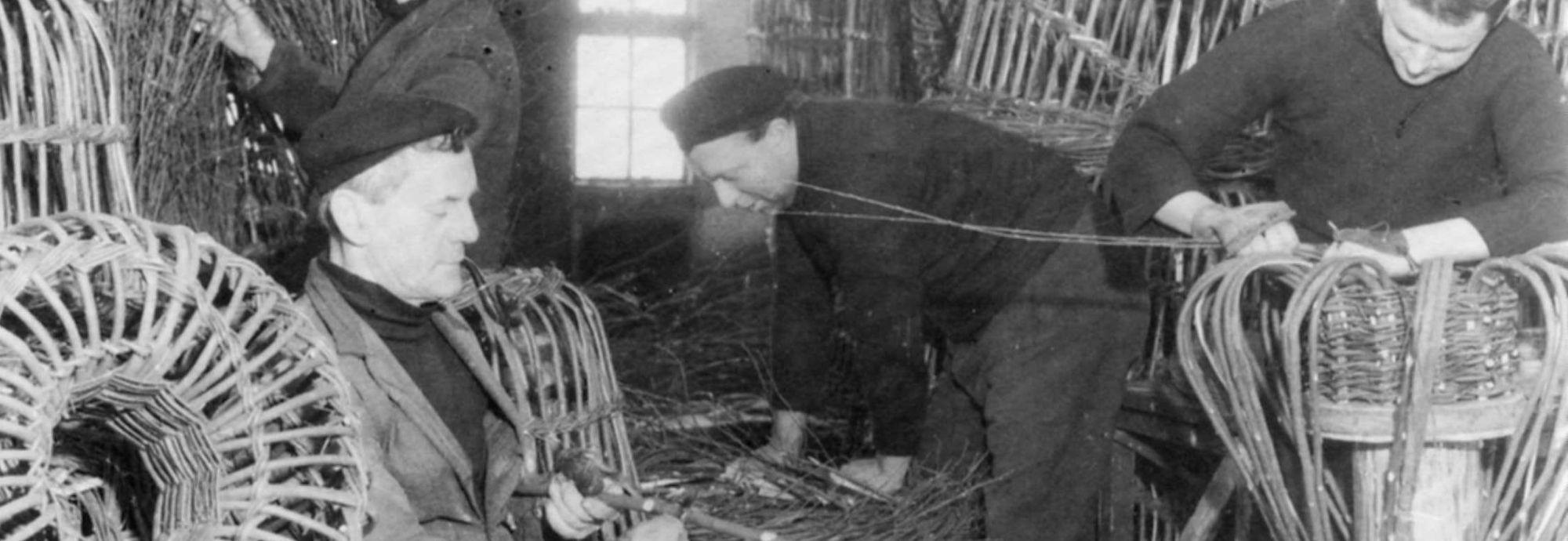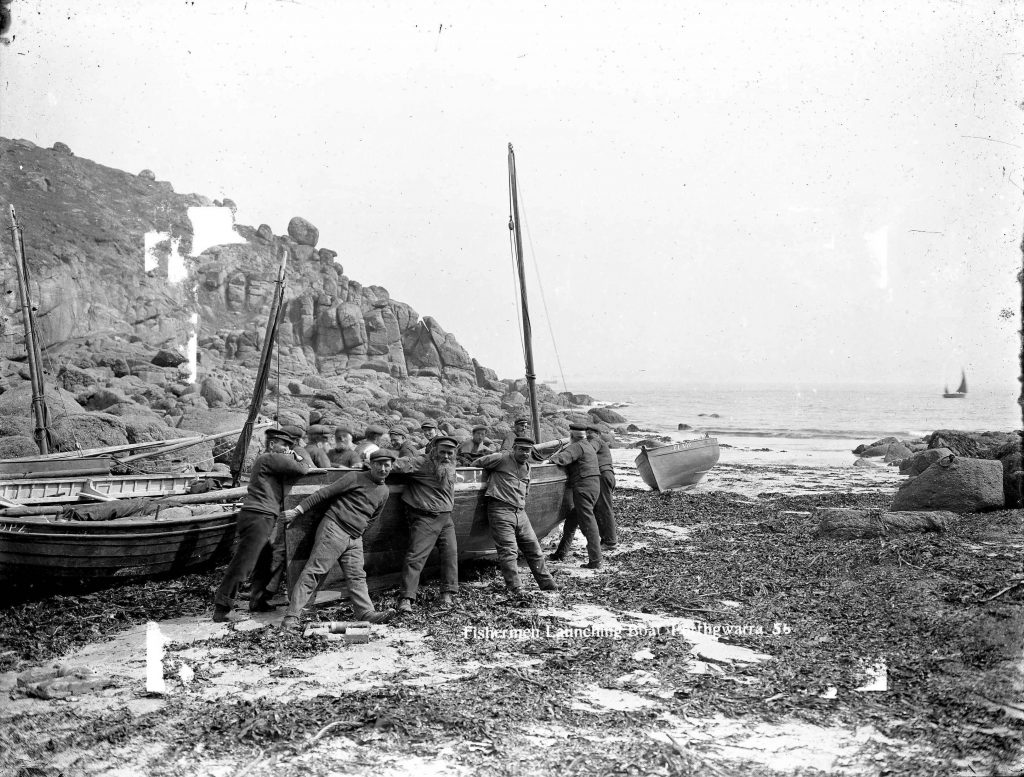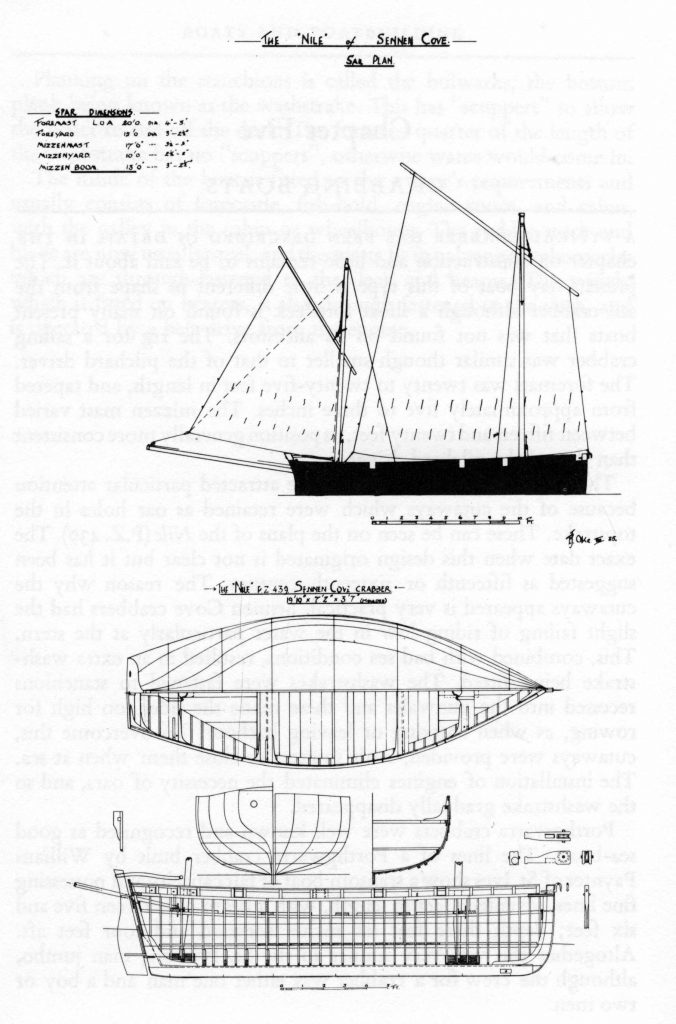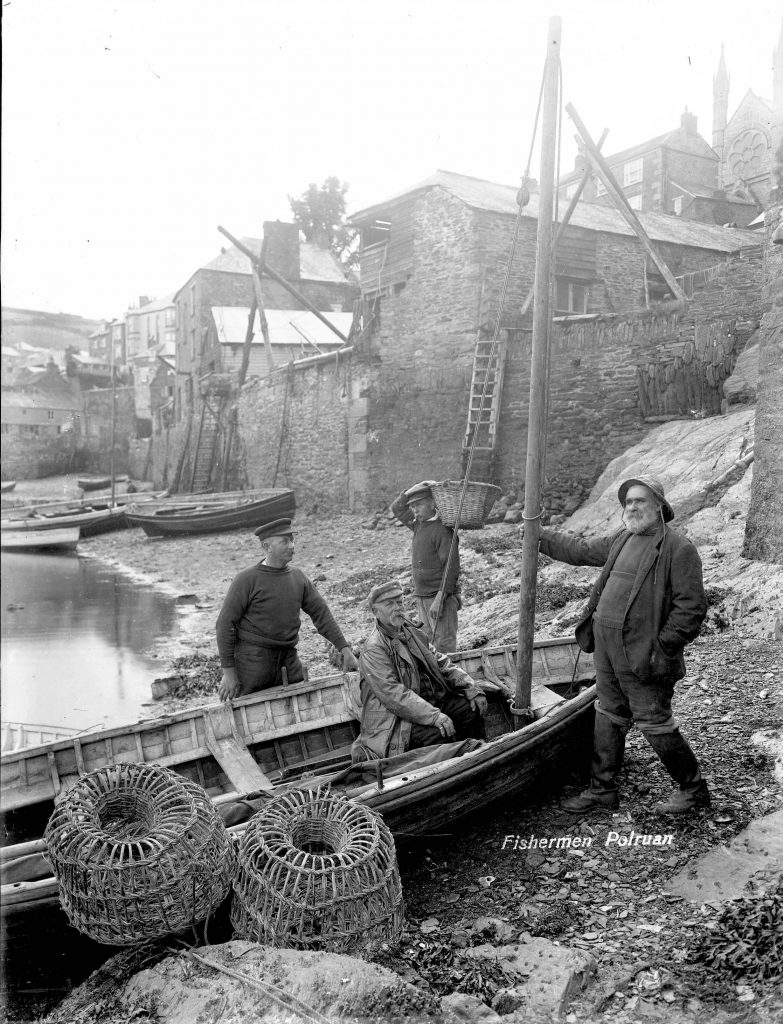

By Tony Pawlyn
Although indifferently documented, this branch of the fisheries dates from the earliest times. In the 1670s tithe disputes, the non-payment of tithes on lobsters by Mount’s Bay fishermen was itemised in some detail in court papers, together with the names of fishermen prosecuted by the tithe proprietor. The fishermen lost the day.
This fishery was carried on from innumerable small coves, in small boats, usually by singleton fishermen. Working short strings of home-made ‘withy’ pots, they rarely worked far from their haven. Making the most of short breaks in the weather to lift their pots, most crab and lobster fishermen had some sort of ‘vivier,’ or ‘stow-pots,’ to keep the catch alive until they had acquired a marketable quantity.
Most fishing communities had their willow plots, or ‘withy’ grounds, and pot-making was a constant secondary occupation, filling long winter days, and unseasonable spells of bad weather. Anchored in strings, usually on rough grounds, hard lying with strong tidal conditions and passing vessels caused great losses of gear. These pots were invariably referred to as ‘crab-pots’- whatever they caught – because crabs were numerically the main catch. The same pots would catch lobsters and the occasional crayfish, which earned considerably more than the sale of the humble crab.

‘Launching Down,’ Porthgwarra in the 1890s. Photo courtesy of Tony Pawlyn.
By the 19th century the industry was widespread. Crabs, lobsters, and crayfish were taken in significant numbers all round the coast. But their marketing was controlled by carriers from Southampton. Every month or so these carrier/buyers made a round of scheduled calls off all the fishing coves to pick up the accumulated catches, which had been kept alive in ‘stow-pots,’ or ‘viviers.’
During the latter quarter of the 19th century, even the smaller coves saw a few hundred pounds worth of shellfish caught each year, with the larger coves making a thousand pounds or so. In 1887 the fishery was worth £23,784 in Devon and Cornwall – which included about £4,000 per annum arising from the oyster fishery at Falmouth. Catches remained fairly consistent, but peaked at £34,253 in 1894. But, while the itinerant carriers were still active, relatively little shellfish was marketed through Newlyn, or any of the other ‘busy’ fishing ports.
The late P. J. Oke drew up plans of the Sennen Cove crabber ‘Nile ~ PZ. 439,’ which have been much reproduced over the years, but give a fair impression of these craft.

Photo courtesy of Tony Pawlyn.
Gradually, as over-land transport improved, Newlyn became a marketing centre for this fishery. By the mid twentieth century, during the inter-war years, the annual values of shellfish passing through Newlyn varied haphazardly. Fluctuating from £3,672 in 1926, down to £105 in 1936. However, during this same period great amounts were being caught by visiting French crabbers. These were carried directly to the continental markets without any accounting this side of the Channel.

Photo courtesy of Tony Pawlyn.
Nearly fifty years later, during the inter-war years, the annual values of shellfish passing through Newlyn varied haphazardly. Fluctuating from £3,672 in 1926, down to £105 in 1936. However, during this same period great amounts were being caught by visiting French crabbers. These were carried directly to the continental markets without any accounting this side of the Channel.
Despite the activities of specialist shellfish merchants, Matt. Harvey & Sons, Newlyn’s share of the fishery did not begin to assume significant proportions until 1961, when the annual value exceeded £10,000 for the first time. It passed through £29,500 in 1969, hitting £82,424 in 1975. Hitherto shellfish had been caught by relatively small inshore craft, setting their strings of crab-pots, but from 1975, the value of traditional shellfish landings at Newlyn became obscured by the wholesale exploitation of off-shore shellfish beds by modern beam-trawlers. In 1976 the shellfish value at Newlyn exceeded £434,000, of which dredged escallops accounted for £285,000, dredged escallops and queens being a relatively new branch of the trawl fishery. By 1997, these shellfish values had grown ten-fold to £4.18 million, and £2.78 million respectively, representing nearly 18% of the gross value of the port’s fish landings.
Today, there are still a few Cornish fishermen working withy-pots and fishing out of the coves. Their boats are now motor craft but the mode of fishing has little changed over the centuries, and their fishery remains a sustainable one.
The Bartlett Blog is written and produced by the volunteers who staff The Bartlett Maritime Research Centre & Library of National Maritime Museum Cornwall. The History of Cornish Shellfishery was written by Tony Pawlyn.
The Bartlett Maritime Research Centre & Library holds a Collection of over 20,000 volumes and offers access to one of the finest collections of maritime reference books, periodicals and archival material. The Bartlett Blog reflects the diversity of material available in The Bartlett Library.

National Maritime
Museum Cornwall Trust
Discovery Quay
Falmouth Cornwall
TR11 3QY
View Map
See our opening hours
Tel: +44(0)1326 313388
Email: enquiries@nmmc.co.uk